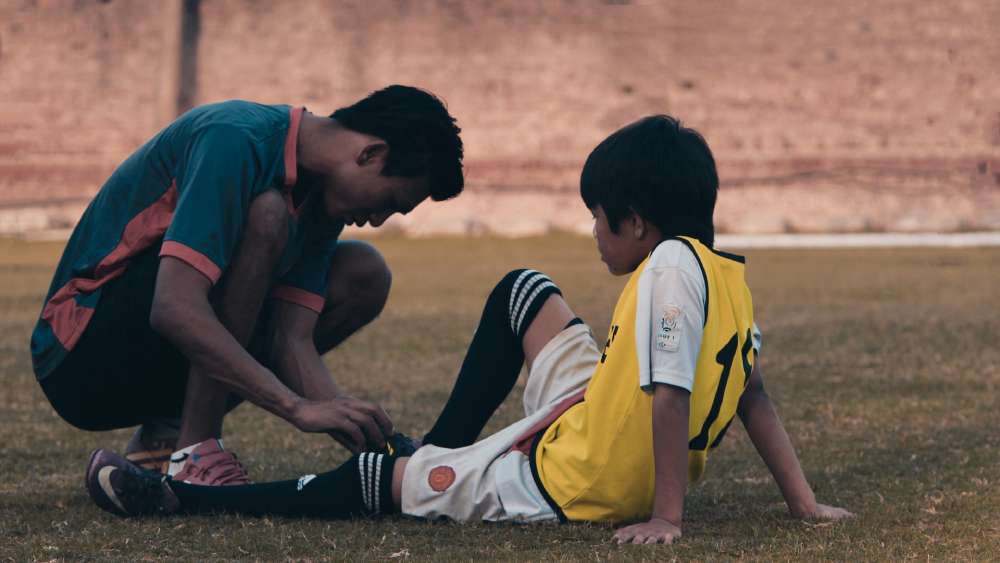
Many children and teens enjoy the camaraderie and excitement of sports. Unfortunately, they are also at risk for injuries.
Whether a player is in pain from a broken leg or a concussion, there are some things all athletes can do to help break the cycle of sports injuries. These strategies include warm-up and cool-down routines, proper technique, and strength training.
Warm-up and cool-down routines
Whether an athlete is training for a competition or just trying to stay in shape, warm-up and cool-down routines are essential for keeping muscles loose and healthy. Exercises to warm up the muscles can help avoid strains and enhance performance in general. Exercises to cool down the body can lessen the accumulation of lactic acid and speed up recovery.
Simple, light cardio exercises can be substituted for more dynamic stretches and motions that closely resemble the exercise about to be performed as a warm-up.
Warming up prepares the body by slowly speeding up heart rate and respiration and activating muscles. It also increases flexibility and helps to prevent injury.
Proper posture
Posture refers to how your body is aligned and positioned. Long-term “bad” posture places excessive strain on muscles and ligaments, causing them to weaken or tear.
Maintaining your spine’s three natural curves is critical to good posture. This comprises the forward curvature of the lower back, midback, and neck.
Maintaining proper posture throughout the day, not just during workouts, is critical for preventing injuries. Poor posture can lead to adverse effects, including Circulatory problems, Increased stress, and Reduced strength and stamina. Incorrect posture can limit oxygen intake, hindering your body’s ability to perform at its peak. For those experiencing persistent discomfort or misalignment, treatments such as Osteopathy in Bexley (or elsewhere), can help improve posture and relieve tension by addressing structural imbalances. Seeking professional guidance can also be beneficial in identifying underlying issues that contribute to poor posture. By improving spinal alignment and flexibility, individuals may experience better mobility, reduced pain, and enhanced overall well-being.
Therefore, incorporating daily activities that promote good posture and balance into your routine is essential for sport injury prevention. This includes Stretching and foam rolling, Strengthening core muscles, and Engaging in balancing exercises.
Strengthening exercises
If athletes adhere to the recommended warm-up and cool-down protocols before and after exercise, many sports-related injuries can be avoided. Stretching and mild aerobic exercise are two ways to improve flexibility and endurance by increasing blood flow to muscles and joints. It also involves strengthening exercises to improve balance and reduce the risk of injury.
Strengthening exercises, sometimes called resistance or weight training, strengthen muscle groups by gradually increasing the amount of external resistance. Athletes who engage in this kind of training can develop strong, healthy muscles that will help them endure the rigors of their sport.
The term “cycle breaker” refers to someone who recognizes and intentionally changes harmful or dysfunctional family patterns. This often requires a combination of deep introspection and behavior-change strategies.
Flexibility exercises
While cardio activities and strength training are often at the top of the to-do list for many fitness programs, the importance of flexibility exercises should be noticed. These stretches are essential to prevent injuries and help improve athletic performance.
Stretching can increase a muscle’s range of motion (ROM). It is important to work up to the maximum ROM gradually and do this consistently to maximize its benefits.
It is also essential to avoid overdoing flexibility exercises and seek symmetry in your stretches, as everyone’s limbs are slightly different. However, a high level of flexibility doesn’t necessarily mean less injury risk; too much flexibility may hinder your performance, mainly if you do it before intense activity. This is because too much flexibility can activate a receptor known as the “stretch reflex,” which prevents excessive muscle elongation. If you do happen to sustain an injury, it’s important to seek an experienced physiotherapist to help you get back to normal.
Stretching
While building strength and speed are important, stretching is equally essential to injury prevention. Enhancing the range of motion and flexibility of muscles can aid in preventing injuries, particularly to the ankle and knee.
Before beginning any activity, young athletes should warm up their muscles by doing a light version of the sport they will play. For example, if they are about to start playing basketball, do some relaxed shooting; for jogging, walk in place or do jumping jacks.
There has been conflicting research on stretching; some studies contend it raises the possibility of muscular strains. However, why these results have been inconsistent needs to be clarified. The length of time that the muscles are held in a stretch is too long, and it reduces their ability to generate power.
